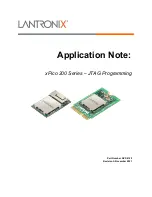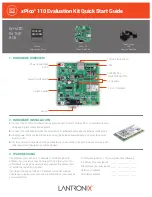
Chapter 2
2 - 4
Figure 2.2 illustrates the specific steps in the name resolution process.
1. The client connects to an Internet Service Provider (ISP) and queries
the local DNS server to resolve the domain name
www.siterequest.com
.
2. If the information is not already in the LDNS server’s cache, the
local DNS server queries a root server (such as InterNIC’s root
servers). The root server returns the IP address of the DNS systems
associated with
www.siterequest.com
, which in this case runs on
the 3-DNS Controller.
3. The LDNS then connects to one of the 3-DNS Controllers to resolve
the
www.siterequest.com
name. The 3-DNS Controller uses a load
balancing mode to choose an appropriate virtual server to receive
the connection, and then returns the virtual server’s IP address to the
LDNS.
4. The LDNS caches the answer from the 3-DNS Controller, and
passes the IP address to the client.
5. The client connects to the IP address through an ISP.
Load balancing connections across the network
Each of the load balancing modes on the 3-DNS Controller can provide
efficient load balancing for any network configuration. The 3-DNS
Controller bases load balancing on pools of virtual servers. When a client
requests a DNS resolution, the 3-DNS Controller uses the specified load
balancing mode to choose a virtual server from a pool of virtual servers. The
resulting answer to this resolution request is returned as a standard
A
record.
Although some load balancing configurations can get complex, most load
balancing configurations are relatively simple, whether you use a static load
balancing mode or a dynamic load balancing mode. More advanced
configurations can incorporate multiple pools, as well as advanced traffic
control features, such as topology or production rules.
For more information on specific load balancing modes, see Chapter 2,
Load
Balancing
in the
3-DNS Reference Guide
. For more information on load
balancing configurations, review the sample configurations in Chapter
6,
Configuring a Globally-Distributed Network
, and Chapter 7,
Configuring a
Content Delivery Network
. If you are unfamiliar with the 3-DNS Controller,
you may also want to review Chapter 5,
Essential Configuration Tasks
.
Working with 3-DNS Controllers and other products
The 3-DNS Controller distributes connections across a group of virtual
servers that run in different data centers throughout the network. You can
manage virtual servers from the following types of products:
◆
BIG-IP systems
A BIG-IP virtual server maps to a series of content servers.
Summary of Contents for 3-DNS
Page 1: ...3 DNS Administrator Guide version 4 5 MAN 0046 02 ...
Page 2: ......
Page 6: ...iv ...
Page 7: ...Table of Contents ...
Page 8: ......
Page 14: ......
Page 26: ...Chapter 1 1 12 ...
Page 28: ......
Page 42: ......
Page 60: ...Chapter 3 3 18 ...
Page 62: ......
Page 76: ...Chapter 4 4 14 ...
Page 78: ......
Page 96: ...Chapter 5 5 18 ...
Page 98: ......
Page 108: ......
Page 120: ......
Page 128: ...Chapter 8 8 8 ...
Page 130: ......
Page 136: ...Chapter 9 9 6 ...
Page 138: ......
Page 145: ...Glossary ...
Page 146: ......
Page 159: ...Index ...
Page 160: ......
















































